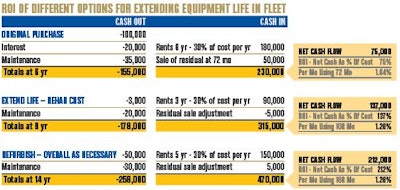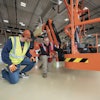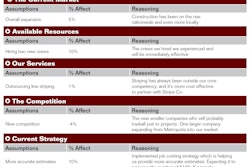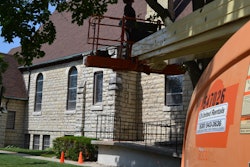
I recently drafted an article for the rental industry where I discussed the latest ROI enhancement technique. Instead of turning units out of the rental fleet in six to seven years, rental companies are following a more stringent maintenance plan and keeping units in the rental fleet for at least three more years. By that time, the unit is usually paid off, thus providing free cash flow (net of maintenance) to retire debt, pay bills or purchase replacement units. Not a bad idea.
Rental companies are taking this concept a step further and refurbishing units virtually back down to zero time. They overhaul what needs overhauling, go through the electrical and hydraulic systems, paint it and rent it for an additional five years. In this case, the cost will be higher but still quite manageable when compared to buying a new unit with a 20% per year loan amortization (plus interest).
Just imagine how your cash flow, balance sheet and income statements would look if you could do something similar with your equipment fleet.
How Rental Does It
What I have found regarding extending the time in fleet is that the actual cost to upgrade a unit is less than the estimated cost supplied by the service manager. In fact, when I measured the service cost against the original equipment cost, it turned out that I am averaging a repair bill similar to a one-month rental fee. (I will take that result every day of the week!) From the standpoint of a rental company, by upgrading a $100,000 unit for a cost of, say, $3,000, I have the ability to earn an additional $90,000 of rental income without any debt service and only the ongoing maintenance cost to keep the unit rental ready.
Considering the refurbishment route, the cost could be in the $30,000 to $50,000 range, which may require working capital to complete the job and thus a financing arrangement that hopefully spreads the cost over three to four years. The financing would require an appraisal that reflects the upgraded value. This may be do-able if you share repair order schedules with the appraisal company. Maintaining a schedule of used refurbished unit sales would help solidify the value of the refurbished equipment.
To show the benefits of these ROI enhancements, let’s assume the rental company bought a $100,000 unit, which it would normally turn over after five to six years and then replace with a new unit (at a higher cost) and new financing. From a cash standpoint, the company would realize:
6 years of rent: $180,000
Paid P&I on the unit: -$120,000
Paid maintenance cost: - $35,000
Sale of unit at 72 mo: $50,000
Total cash flow: $75,000
Return = 1.04% per mo owned
Now if the company extends the unit in the fleet another three years, it adds $90,000 to the rents, pays $3,000 upfront to upgrade the unit and pays normal maintenance costs for the three-year period. It winds up adding $62,000 to the net cash flow above; adjust for the retail sale of $45,000 and the return now is $137,000 against a cost of $100,000. The return is 1.26% per month owned, a 21% increase over the previous example.
If the company refurbishes after eight to nine years and puts $30,000 to $50,000 into the unit, it will gain another $150,000 of rentals with normal maintenance cost. Subtract the $50,000 refurbishment cost, add the additional rentals, subtract the maintenance cost and adjust the sale price to $50,000 and the result is a total cash flow of $212,000 over 14 years, or a 1.26% monthly return over a 14-year period.
There is a school of thought that suggests you don’t want to turn rental units until you have earned 300% of cost on the unit, with “earned” meaning a total of both rentals and the sale of the unit. Our “extend life” example gets us pretty close even before we have incurred any major refurbishment cost.
Applying the Concept to Construction
Now what if you substitute “contractor fleet” for “rental fleet” in these examples? Assuming you have the required technical staff, I will suggest you can duplicate what the rental companies are doing and still maintain a reasonable uptime when you have units in the field. I have to think a program of this type would reduce costs, increase cash flow and, in general, give you the opportunity to be more competitive with your bidding process.
Refurbishment of equipment is going to become more popular. The only hold back will be a lack of techs and service facilities. The good news, however, is that equipment dealers and rental companies are prepared to refurbish your older units for a fraction of what a new unit would cost. Even the OEMs are providing this service.
Things keep changing as companies find additional ways to make more money, get more work and in general become more competitive. If you follow these changes, you also have the opportunity to improve the returns on your equipment fleet.
My examples give you an idea of how to increase returns on your equipment investments. It’s not hard to figure out — the more revenue you can earn on a unit before you turn it over, the more you get to keep. As long as the maintenance costs don’t get out of hand, and the reliability remains reasonable, it pays to properly maintain your equipment fleets. You will save more and earn more in the process.




















